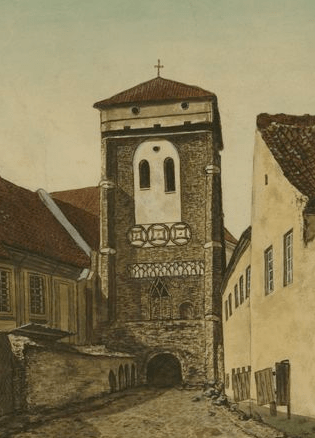Symbols on Lithuanian Coins: the Religion, the Ruler, the State
First coins of the Grand Ducky of Lithuania were minted in the late 14th century, right after Władysław II Jagiełło became the king of Poland and Lithuania began the process of Christianisation (in 1386–1387). The Christianisation kick-started a number of important changes in the country, and some of them found their reflection in early Lithuanian coins. The symbolism of the coins was dominated by the motives of religion and authority because in addition to being part of the economy, the coins were supposed to deliver messages about the ruler of the country among various groups of the society.
Christian symbols: lions, eagles, and hearts
Earliest coins from the times of Jagiełło’s rule feature a portrait of the Virgin Mary on obverse and symbols of a lion and a knot, or two interwoven hearts, on their reverse. Other types of coins bear the image of an eagle on one side and that of a lion on the other. A little later, the country started minting coins with a lion or a leopard on one side and a double cross on a shield of the other.
All these symbols used on coins are related to the Christianity and the Christianisation of Lithuania. The symbol of the Virgin Mary, encircled by the legend in Latin, MAGNA REGINA (The Great Queen), apparently had been borrowed from the German Order which considered the Virgin Mary its patron. A lion, linked to Jesus Christ, was a symbol of a supreme ruler throughout the Christendom. A knot was a symbol of protection for Orthodox Christians in the east.
This means that the symbols appearing on Lithuanian coins were supposed to show to Christians both in the West and in the East that Lithuania was already a Christian country under protection of the Lord.
An eagle, although used for a short time, and a lion both were symbols of Christianisation of the country offering allusions to Jesus Christ. Just like in other European countries, the symbols of a lion and an eagle gradually transformed into symbols of rulers and their realms.
The double cross and the Columns of Gediminids arrived from Byzantium
Just several years after Jagiełło minted the first Lithuanian coins, his own symbols began replacing religious ones. Jagiełło’s personal sign, a double cross on a shield, becomes an essential image on coins. The ruler’s emblem first emerges on coins bearing the image of a lion, and later finds its place on a multitude of coins with a rider.
The double cross became Jagiełło’s personal sign right after he had been baptised as Władysław II. The symbol arrived in Lithuania through Hungary because Jadwiga, the daughter of Louis the Great, the King of Hungary and Poland, was the Queen of Poland and married Jagiełło. Hungary, in turn, adopted the double cross from Byzantium in the late 12th century. In the honour of the Hungarian king Ladislaus I, the double cross has been declared the symbol of Saint Ladislaus. Jagiełło, who took the name of Władysław during his baptism, simultaneously adopted the symbol of double cross as his personal sign.
On coins, the double cross was meant to manifest the ruler, but it also conveyed a certain religious message because the double cross was the symbol of Christianisation in the Western European heraldic tradition.
Meanwhile the image of a rider stood for a ruler. The horseback knight was an emblem of the dynasty too, and this is why the rider appears on coins minted by later rulers, including Vytautas, Casimir IV Jagiellon, Alexander Jagiellon, and Sigismund I the Old. In addition to that, the rulers had a one more heraldic symbol, the so-called Gediminid Columns.
The Columns first emerge in 1397, when Vytautas was the grand duke of Lithuania. Initially that was his personal coat of arms. Later the Columns became the coat of arms of a grand duke of Lithuania. This is why this symbol appears on coins minted by Vytautas, Casimir Jagiellon, Sigismund I the Old and Sigismund II Augustus.
Ruler’s signs turned into coat of arms of the state
As time passed by, the horseback knight evolved from the emblem of the dynasty to the coat of arms of the Grand Duchy of Lithuania. The process of change, however, can only be noticed analysing one-groszy coins minted by Sigismund I the Old in 1535 and 1536.
As a symbol of the state, the rider always carries a shield with a double cross. This is not always true speaking of the same rider serving as a symbol of a particular ruler.
The rider featured all later coins of the GDL right until 1707 when last coins were minted. Later, when Poland and Lithuania began using the same coins all over the Commonwealth, the rider still featured the new coins. As the ties with Poland were getting closer, a one more symbol of statehood, the Polish Eagle, becomes common on coins minted in the GDL. The latter tradition takes its root during the reign of Alexander Jagiellon (1492–1506).
Anyone analysing coins of the GDL will find other symbols as well. They include rulers’ monograms and their dynastic coats of arms, emblems of the treasurers of the GDL, and even signs of artisans responsible for producing coin dies or of people who ran the mints.
Literature: E. Remecas, Vilniaus Žemutinės pilies pinigų lobis (XIV a. pabaiga), Vilnius, 2003.
Eduardas Remecas



